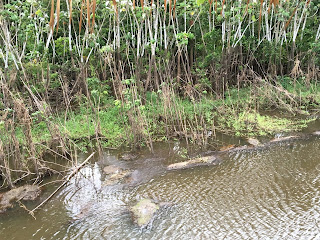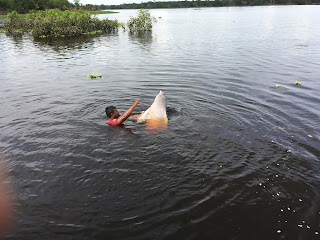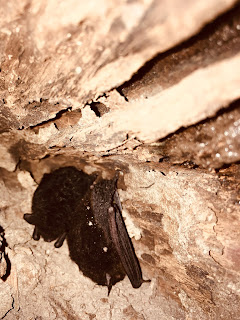Amazon Rain Forest:
Sachi G. Dastidar
In September of 2019 Shefali and I took a trip through Brazil. Our
first stop was at Brazil’s Amazon Rain Forest, then to the newly-built capital
city of Brasilia, followed by a trip to Iguassu Falls of Argentina and Brazil,
and on the beautiful city of Rio de Janeiro. Iguassu is a junction of three
nations: Brazil, Argentina and Paraguay. Thus we journeyed to the Argentinian
side of the Falls, then made a brief trip to the Paraguayan border city of
Ciudad del Este.
If one lands at Manaus, the center of Amazon and the capital of
Amazonas State, as we did, one may not realize that one is landing in the
middle of a forest, as Manaus is a huge metropolis of 2.3 million people with
freeways, skyscrapers, theaters, hotels and restaurants.
These days we hear a lot about fires in Amazon. There was none
in the Metropolis. But we witnessed small fires set by residents during our
road trip to our jungle lodge, as well as when we flew over the forest going to
Brasilia. Most of the fires are at the edges of the forest as people were
land/forest grabbing at the edges going towards the center. Manaus is at the
center of the forest area, hundreds of miles from the border forest
fire/cleansing.
Amazon: The Amazon Rain
Forest is the largest forest and larger than most countries of the world. To
reach any part of the rain forest one has to travel by boat to the nearest
corner of the forest. One cannot just go anywhere one wants to as the forest is
either impassable or under water. There are many roads through the forest, and
people have built homes, businesses and farms along those roads crisscrossing the
Rio Negro (Black River) and Amazon Rivers. There are hundreds of tributaries of
Amazon River. Luckily for us, it rained briefly during our tour. Rain often
comes without any notice.
Our one-of-a-kind forest
experience was first a day-long boat journey through the river. On the river we
saw Pink River Dolphins; an Indigenous Village where they danced for us and we
danced with them. They offered us roasted fish, crocodile meat, plus live and
roasted edible spider-like insects. We visited a farm for research of 12-feet
long, 120 kilogram Pierarku fish; a floating village where all the buildings
are built on top of logs allowing them to float up or down as the rivers rise
and fall by 10 or 20 feet or more. We also took a tour at the “Death of Rio
Negro” where the river simply vanished into Amazon’s yellowish color. Thus
people call “Death” of the river.
After our boat landed
in the south shore of Amazon at Port Careiro we traveled 95 kilometers by road
through the inhabited portion of the forest to another ferry to take us to our
Forest Lodge run by a family of workers. One morning we took a
several-kilometer long trek through the forest with a guide in front and a
security in our back, both carrying machetes.
Here are a few of the
pictures and videos from our travel – land and water – through Amazon Rain Forest.
The River and Forest
Manaus Port & City in Distance
Pink River Dolphins
At Indigenous Brazilian People's Village in the Middle of the Rain Forest
Roasted Fish & Crocodile (Cayman) for Testing
Kilometers Long Walk through Rain Forest
Sunrise through the Jungle
Tree Bark used as a Bowl
Edible Grubs
Jungle Swing
Poisonous Frog
Shefali with a live baby crocodile caught in the middle of the night
by a Jungle Lodge employee.
A Swim at the River at Forest Lodge
Fishing Piranha
Floating Restaurant
At the Tower over the Forest at Dawn
Here are Pictures from Air, including a Few Fires or Smoke
Forest Fire at Night
Distant Smoke from the Forest









































































No comments:
Post a Comment